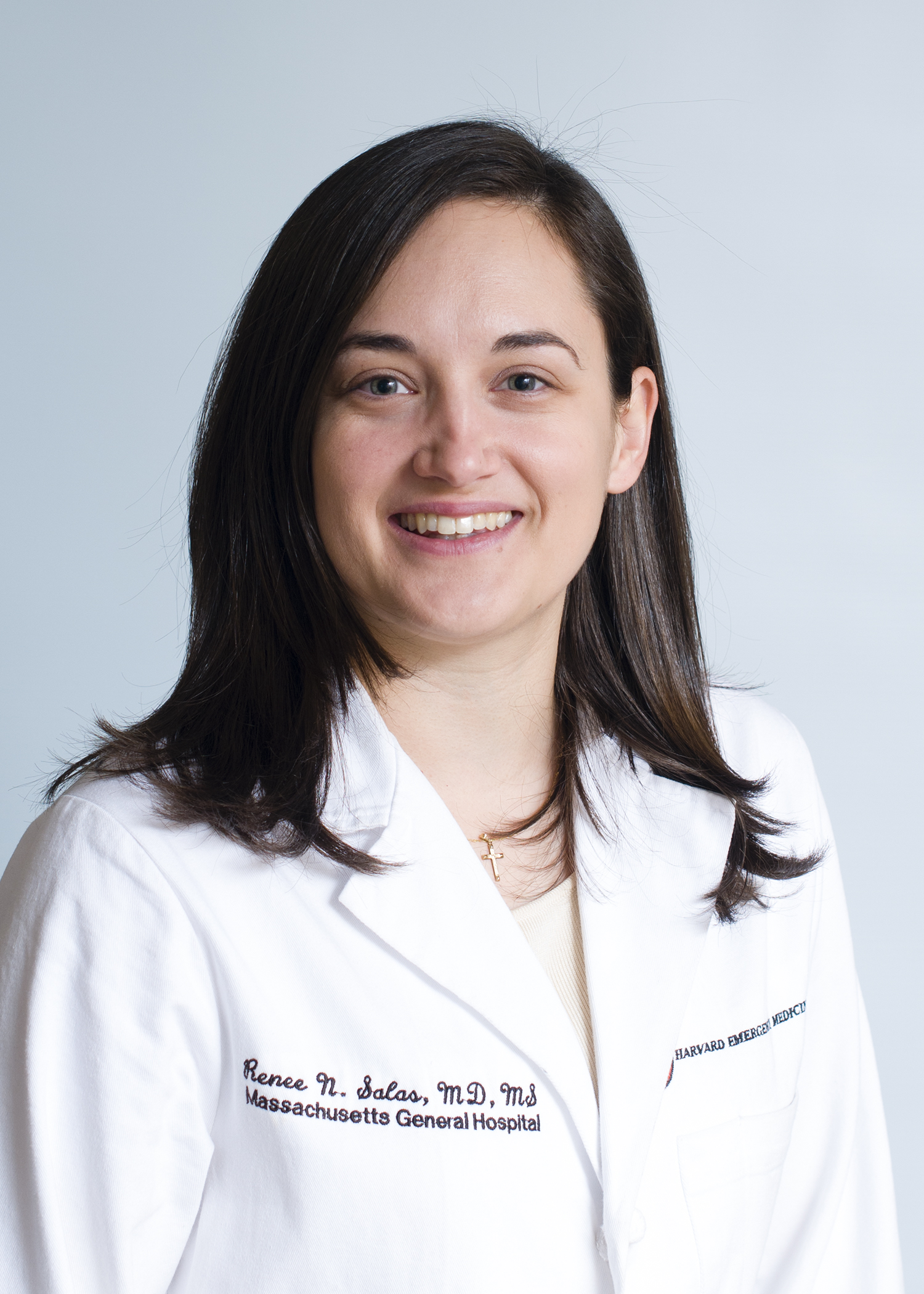Blue Light for Infectious Diseases Propionibacterium Acnes Helicobacter Pylori and Beyond
Antimicrobial Blue Light: Tackling Drug Resistance Without Using Drugs
Ying Wang & Tianhong Dai
Abstract
Because of the growing global threat of antibiotic resistance, there is a critical need for the development of alternative approaches. An innovative approach, antimicrobial blue light (aBL), has attracted increasing attention. This article discussed the basic concepts of aBL and recent findings in the studies of aBL. It is currently hypothesized that the antimicrobial property of aBL is attributed to the presence of endogenous photosensitizing chromophores in microbial cells, which produce cytotoxic reactive oxygen species upon light irradiation. A wide range of important microbes were found to be susceptible to aBL inactivation. Studies also showed there existed a therapeutic window where microbes were selectively killed by aBL while host cells were preserved. The combination of aBL with some other agents resulted in significantly improved antimicrobial efficacy. Future efforts should be exerted on the standardization of study design, further elucidation of the mechanism, optimization of the technique, and translation of this technique to clinic.
What is antimicrobial blue light?

Light is electromagnetic radiation that can be detected by human eye. Violet/blue light, which covers the spectrum from 400 to 470 nm wavelengths, is intrinsically antimicrobial possibly attributed to the presence of the endogenous photosensitizing chromophores (i.e. photosensitizers) in microbial cells.1 The endogenous photosensitizers absorb violet/blue light and subsequently lead to the production of cytotoxic reactive oxygen species (ROS) that can kill microbes. In Biomedical Optics and Infectious Disease societies, violet/blue light is also termed antimicrobial blue light (aBL) when it is applied in the inactivation of microbes.
What is the importance lying in the studies of aBL as an alternative to traditional antibiotics?
Although microbiologists have been ringing the alarm bell for years, the threat of antibiotic resistance in healthcare and community settings has reached new prominence in the popular press that the issue should be added to the list of global emergencies. It is now indisputable that antibiotic resistance is life-threatening in the same sense as cancer, both in the number of cases and the likely outcome.2 According to a recent report released by the Centers for Disease Control and Prevention (CDC), at least 23,000 people die each year as a direct result of antibiotic-resistant infections.3 The extensive use of antibiotics is the single most important factor leading to antibiotic resistance.3-4 As a result, there is a pressing need for the development of alternative treatment regimens for antibiotic-resistant infections. Recently, Dr. Karen Bush and 29 other experts in antibiotic resistance noted in Nature Reviews Microbiology that: The investigation of novel non-antibiotic approaches for the prevention of and protection against infectious diseases should be encouraged, and such approaches must be high-priority research and development projects.2 As a non-antibiotic and light-based approach, aBL has attracted increasing attention from health care scientists due to its intrinsic antimicrobial property. The potential applications of aBL cover not only the treatment of infectious diseases but also environmental sterilization, postharvest preservation, veterinary medicine, etc.
What are the major advantages of aBL over other antimicrobials?
aBL is compelling in that it is a non-antibiotic approach that is non-injurious to host cells and tissues. In comparsion to antmicrbial phtotdynamic therapy, aBL kills microbes without the involvement of exogenous photosensitizers. It is well accepted that aBL is much less detrimental to host cells than germicidal UVC irradiation.5-6 In addition, aBL exhibits equal killing effectiveness of microbes regardless of their status of antibiotic resistance. It is also envisioned that microbes are less able to develop resistance to aBL than to traditional antibiotics, because of the multi-target characteristics of aBL.7
What is the mechanism of action of aBL?

Fig.1 Mechanism of action of aBL
The mechanism of action of aBL is still not fully understood although significant efforts have been exerted in further elucidating it in recent years. The common hypothesis is that aBL excites the naturally existing endogenous photosensitizers in microbial cells, and subsequently leads to the production of ROS that can kill microbes (Fig. 1). Studies using the DNA manipulation technique supported this hypothesis.8-9 The endogenous photosensitizers, including porphyrins, flavins, and/or NADH, were successfully identified in some important microbial cells. 10-11 Studies also provided the evidences that aBL inactivation of microbes was attributed to ROS-induced cell membrane damage, inactivation of virulence factors, DNA-oxidation, and genetic changes, etc.12-13-14
What are the current focuses in the studies of aBL?
At present, aBL studies are focused on the efficacy of aBL inactivation of different microbes, its mechanism of action, synergism of aBL with other agents, its effect on host cells and tissues, and the potential development of resistance to aBL by microbes. A wide range of microbial species has been tested for aBL inactivation, including Gram-positive bacteria, Gram-negative bacteria, mycobacteria, molds, yeasts and dermatophytes. Although varying results of the aBL efficacy were observed in different studies due to the varying conditions, the majority of the microbes studied were found to be susceptible to aBL inactivation.15-16
Animal studies demonstrated that aBL significantly reduced microbial load in infected lesions, indicating the potency of aBL for infectious diseases.17-23 Two pilot clinical studies showed the effectiveness of aBL in treating dental pathogens.24-25 In several ongoing studies of our laboratory, we are testing aBL therapy for urinary tract infections, genital tract infections, implant-related infections, and open fracture infections in murine models. The synergistic antimicrobial effect of aBL with other agents (such as antibiotics, disinfectants, extracts from medicinal plants, nanoparticles, ultrasound, etc.) was reported by several studies.26-29
As a safety study of aBL application, the effect of aBL on host cells and tissues was investigated, including cytotoxicity and genotoxicity. Those studies suggested that there existed a therapeutic window where microbes were selectively inactivated while host cells were preserved.21, 30-31 In addition, no evidence of genotoxicity of aBL was observed in mouse skin in vivo when exposed to the therapeutic aBL exposure for inactivating mature biofilms in vivo.19
What should be done in the future in the studies of aBL?
Future efforts should be exerted on the standardization of study conditions, further elucidation of the mechanism, optimization of the technique, and translation of this technique to clinical treatment.
Acknowledgements
The research in TD group has been supported by the National Institute of Health (R21AI109172 and R01AI123312 to TD.

Ying Wang, MD, PhD, is a Visiting Lecturer of Harvard Medical School and an Associate Chief Physician at Chinese PLA General Hospital. Her research is focused on photodynamic therapy and low-level light therapy. Dr. Wang is the principle investigator of two grants awarded by National Natural Science Foundation, China.
Visiting Lecturer on Dermatology, Harvard Medical School Wellman Center for Photomedicine Massachusetts General Hospital 40 Blossom Street Boston, MA, 02114 Tel: 617-643-2165 Fax: 617-726-6643 Email: ywang89@mgh.harvard.edu

Tianhong Dai, PhD, is an Assistant Professor at Harvard Medical School. His research interest is centered around light-based antimicrobial therapy for infections. Dr. Dai is the author or co-authors of over 80 peer-reviewed publications, and has been the principle investigator of the grants from NIH, DoD, CIMIT, and other agencies.
Tianhong Dai, PhD Assistant Professor of Dermatology, Harvard Medical School Wellman Center for Photomedicine Massachusetts General Hospital 40 Blossom Street Boston, MA, 02114 Tel: 617-726-6169 Fax: 617-726-6643 Email: tdai@mgh.harvard.edu
References
- Wang, Y.; Wang, Y.; Wang, Y.; Murray, C. K.; Hamblin, M. R.; Hooper, D. C.; Dai, T., Antimicrobial blue light inactivation of pathogenic microbes: State of the art. Drug Resistance Updates 2017, 33–35, 1-22.
- Bush, K.; Courvalin, P.; Dantas, G.; Davies, J.; Eisenstein, B.; Huovinen, P.; Jacoby, G. A.; Kishony, R.; Kreiswirth, B. N.; Kutter, E.; Lerner, S. A.; Levy, S.; Lewis, K.; Lomovskaya, O.; Miller, J. H.; Mobashery, S.; Piddock, L. J.; Projan, S.; Thomas, C. M.; Tomasz, A.; Tulkens, P. M.; Walsh, T. R.; Watson, J. D.; Witkowski, J.; Witte, W.; Wright, G.; Yeh, P.; Zgurskaya, H. I., Tackling antibiotic resistance. Nat Rev Microbiol 2011, 9 (12), 894-6.
- Hampton, T., Report reveals scope of US antibiotic resistance threat. JAMA 2013, 310 (16), 1661-3.
- Cowen, L. E.; Sanglard, D.; Howard, S. J.; Rogers, P. D.; Perlin, D. S., Mechanisms of Antifungal Drug Resistance. Cold Spring Harb Perspect Med 2014, 5 (7), a019752.
- Kleinpenning, M. M.; Smits, T.; Frunt, M. H.; van Erp, P. E.; van de Kerkhof, P. C.; Gerritsen, R. M., Clinical and histological effects of blue light on normal skin. Photodermatol Photoimmunol Photomed 2010, 26 (1), 16-21.
- Liebmann, J.; Born, M.; Kolb-Bachofen, V., Blue-light irradiation regulates proliferation and differentiation in human skin cells. J Invest Dermatol 2010, 130 (1), 259-69.
- Dai, T.; Gupta, A.; Murray, C. K.; Vrahas, M. S.; Tegos, G. P.; Hamblin, M. R., Blue light for infectious diseases: Propionibacterium acnes, Helicobacter pylori, and beyond? Drug Resist Updat 2012, 15 (4), 223-36.
- Galbis-Martinez, M.; Padmanabhan, S.; Murillo, F. J.; Elias-Arnanz, M., CarF mediates signaling by singlet oxygen, generated via photoexcited protoporphyrin IX, in Myxococcus xanthus light-induced carotenogenesis. J Bacteriol 2012, 194 (6), 1427-36.
- Grinholc, M.; Rodziewicz, A.; Forys, K.; Rapacka-Zdonczyk, A.; Kawiak, A.; Domachowska, A.; Golunski, G.; Wolz, C.; Mesak, L.; Becker, K.; Bielawski, K. P., Fine-tuning recA expression in Staphylococcus aureus for antimicrobial photoinactivation: importance of photo-induced DNA damage in the photoinactivation mechanism. Appl Microbiol Biotechnol 2015, 99 (21), 9161-76.
- Battisti, A.; Morici, P.; Signore, G.; Ghetti, F.; Sgarbossa, A., Compositional analysis of endogenous porphyrins from Helicobacter pylori. Biophys Chem 2017, 229, 25-30.
- Fyrestam, J.; Bjurshammar, N.; Paulsson, E.; Mansouri, N.; Johannsen, A.; Ostman, C., Influence of culture conditions on porphyrin production in Aggregatibacter actinomycetemcomitans and Porphyromonas gingivalis. Photodiagnosis Photodyn Ther 2017, 17, 115-123.
- McKenzie, K.; Maclean, M.; Grant, M. H.; Ramakrishnan, P.; MacGregor, S. J.; Anderson, J. G., The effects of 405 nm light on bacterial membrane integrity determined by salt and bile tolerance assays, leakage of UV-absorbing material and SYTOX green labelling. Microbiology (Reading, England) 2016, 162 (9), 1680-1688.
- Biener, G.; Masson-Meyers, D. S.; Bumah, V. V.; Hussey, G.; Stoneman, M. R.; Enwemeka, C. S.; Raicu, V., Blue/violet laser inactivates methicillin-resistant Staphylococcus aureus by altering its transmembrane potential. Journal of photochemistry and photobiology. B, Biology 2017, 170, 118-124.
- Adair, T. L.; Drum, B. E., RNA-Seq reveals changes in the Staphylococcus aureus transcriptome following blue light illumination. Genomics Data 2016, 9, 4-6.
- Fyrestam, J.; Bjurshammar, N.; Paulsson, E.; Mansouri, N.; Johannsen, A.; Ostman, C., Influence of Culture Conditions on Porphyrin Production in Aggregatibacter actinomycetemcomitans and Porphyromonas gingivalis. Photodiagnosis Photodyn Ther 2016.
- Decarli, M. C.; Correa, T. Q.; Vollet-Filho, J. D.; Bagnato, V. S.; Souza, C. W. O., The influence of experimental conditions on the final result of photoinhibition of Staphylococcus aureus. Photodiagnosis Photodyn Ther 2017.
- Dai, T.; Gupta, A.; Huang, Y. Y.; Sherwood, M. E.; Murray, C. K.; Vrahas, M. S.; Kielian, T.; Hamblin, M. R., Blue light eliminates community-acquired methicillin-resistant Staphylococcus aureus in infected mouse skin abrasions. Photomed Laser Surg 2013, 31 (11), 531-8.
- Dai, T.; Gupta, A.; Huang, Y. Y.; Tin, R.; Murray, C. K.; Vrahas, M. S.; Sherwood, M. E.; Tegos, G. T.; Hamblin, M. R., Blue light resques mice from potentially fatal Pseudomonas aeruginosa burn infection: efficacy, safety, and mechanism of action. Antimicrob Agents Chemother 2013, 57.
- Wang, Y.; Wu, X.; Chen, J.; Amin, R.; Lu, M.; Bhayana, B.; Zhao, J.; Murray, C. K.; Hamblin, M. R.; Hooper, D. C.; Dai, T., Antimicrobial Blue Light Inactivation of Gram-Negative Pathogens in Biofilms: In Vitro and In Vivo Studies. J Infect Dis 2016, 213 (9), 1380-7.
- Yang, P.; Wang, N.; Wang, C.; Yao, Y.; Fu, X.; Yu, W.; Cai, R.; Yao, M., 460-nm visible light irradiation eradicates MRSA via inducing prophage activation. Journal of photochemistry and photobiology. B, Biology 2017, 166, 311-322.
- Zhang, Y.; Zhu, Y.; Chen, J.; Wang, Y.; Sherwood, M. E.; Murray, C. K.; Vrahas, M. S.; Hooper, D. C.; Hamblin, M. R.; Dai, T., Antimicrobial blue light inactivation of Candida albicans: In vitro and in vivo studies. Virulence 2016, 7 (5), 536-45.
- Zhang, Y.; Zhu, Y.; Gupta, A.; Huang, Y.; Murray, C. K.; Vrahas, M. S.; Sherwood, M. E.; Baer, D. G.; Hamblin, M. R.; Dai, T., Antimicrobial blue light therapy for multidrug-resistant Acinetobacter baumannii infection in a mouse burn model: implications for prophylaxis and treatment of combat-related wound infections. J Infect Dis 2014, 209 (12), 1963-71.
- Zhu, H.; Kochevar, I. E.; Behlau, I.; Zhao, J.; Wang, F.; Wang, Y.; Sun, X.; Hamblin, M. R.; Dai, T., Antimicrobial blue light therapy for infectious keratitis: ex vivo and in vivo studies. Invest Ophthalmol Vis Sci 2017, 58 (1), 586-593.
- Soukos, N. S.; Stultz, J.; Abernethy, A. D.; Goodson, J. M., Phototargeting human periodontal pathogens in vivo. Lasers Med Sci 2015, 30 (3), 943-52.
- Genina, E. A.; Titorenko, V. A.; Belikov, A. V.; Bashkatov, A. N.; Tuchin, V. V., Adjunctive dental therapy via tooth plaque reduction and gingivitis treatment by blue light-emitting diodes tooth brushing. Journal of Biomedical Optics 2015, 20 (12), 128004.
- Akram, F. E.; El-Tayeb, T.; Abou-Aisha, K.; El-Azizi, M., A combination of silver nanoparticles and visible blue light enhances the antibacterial efficacy of ineffective antibiotics against methicillin-resistant Staphylococcus aureus (MRSA). Ann Clin Microbiol Antimicrob 2016, 15 (1), 48.
- Marques-Calvo, M. S.; Codony, F.; Agusti, G.; Lahera, C., Visible light enhances the antimicrobial effect of some essential oils. Photodiagnosis Photodyn Ther 2016.
- Fila, G.; Kawiak, A.; Grinholc, M. S., Blue light treatment of Pseudomonas aeruginosa: Strong bactericidal activity, synergism with antibiotics and inactivation of virulence factors. Virulence 2016, 1-21.
- Moorhead, S.; Maclean, M.; Coia, J. E.; MacGregor, S. J.; Anderson, J. G., Synergistic efficacy of 405 nm light and chlorinated disinfectants for the enhanced decontamination of Clostridium difficile spores. Anaerobe 2016, 37, 72-7.
- Dai, T.; Gupta, A.; Huang, Y. Y.; Yin, R.; Murray, C. K.; Vrahas, M. S.; Sherwood, M. E.; Tegos, G. P.; Hamblin, M. R., Blue light rescues mice from potentially fatal Pseudomonas aeruginosa burn infection: efficacy, safety, and mechanism of action. Antimicrob Agents Chemother 2013, 57 (3), 1238-45.
- Ramakrishnan, P.; Maclean, M.; MacGregor, S. J.; Anderson, J. G.; Grant, M. H., Differential sensitivity of osteoblasts and bacterial pathogens to 405-nm light highlighting potential for decontamination applications in orthopedic surgery. J Biomed Opt 2014, 19 (10), 105001.
Related Articles
Source: http://www.hhpronline.org/articles/2017/10/29/antimicrobial-blue-light-tackling-drug-resistance-without-using-drugs










Belum ada Komentar untuk "Blue Light for Infectious Diseases Propionibacterium Acnes Helicobacter Pylori and Beyond"
Posting Komentar